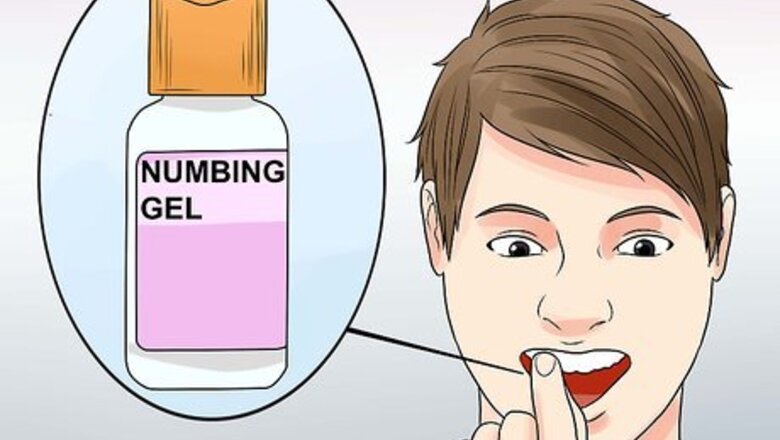
views
X
Research source
There are multiple ways to stop pain caused by wisdom teeth.
Using Medicine
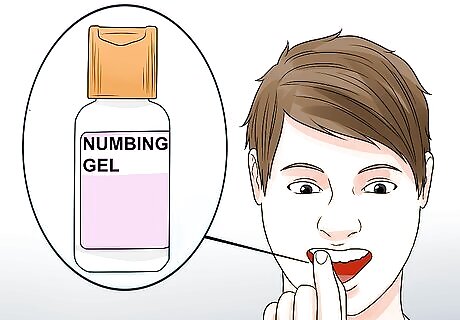
Use numbing gels. If your teeth are giving you issues, you can use numbing gels on your gums. These gels, which contain benzocaine, should be applied directly to your gums to help numb your toothache. Don't swallow the gel if possible, but spit the excess out instead. 10 % lidocaine spray is another option, but be careful not to spay it down your throat when you apply. Make sure you follow the instructions on the tube to know how much to apply and how often.
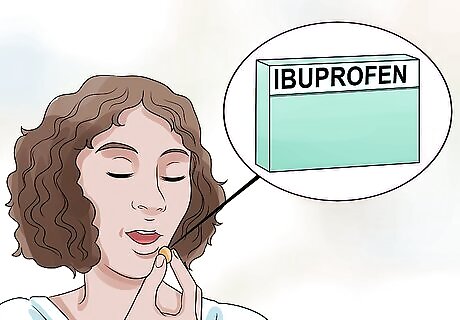
Try over-the-counter pain medication. When you tooth aches, you can take over-the-counter pain medication to help. These medications include aspirin, ibuprofen (Advil), acetaminophen (Tylenol), and naproxen (Aleve). Make sure to follow the instructions for dosage on the label.

Avoid overusing medications. If you are in a lot of pain, be careful not to overuse either the gels or pain medications. Using too much gel with benzocaine can cause a rare but serious issue called methemoglobinemia, which is a deadly illness in which the oxygen levels your blood can carry are decreased. Too many pain medications can also cause other problems, such as stomach issues and ulcers. Never use benzocaine on anyone under two years of age.
Trying Home Remedies
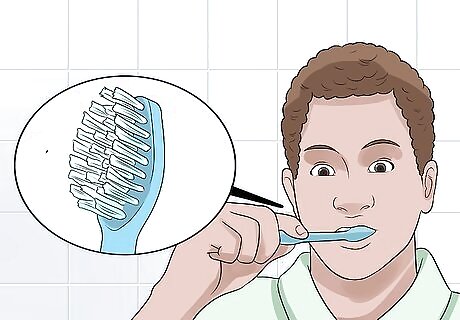
Use a soft toothbrush. When you are suffering from tooth pain, brushing your teeth may hurt; however, you should always brush your teeth twice a day. If you are experiencing issues with pain, get a soft toothbrush. This will be gentler on your gums. You can go back to your normal toothbrush strength after your wisdom tooth pain goes away.
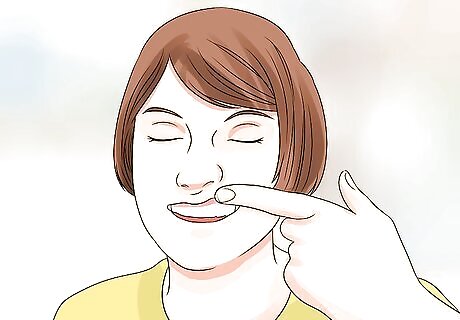
Massage your gums. If your teeth are coming through, your gums may hurt. To help your teeth along, try massaging the gums around where the teeth are breaking through. This will help alleviate the pain and ease the teeth through your gums. When massaging your gums, gently rub the top of the erupting tooth with a clean finger. You can also wrap your finger into a sterile gauze and start the massage after you have rinsed with a chlorhexidine mouthwash. Also get as much of the sides of the tooth area. Don’t massage them too hard. This can hurt your gums. Repeat three to four times a day.

Use an ice pack. If you are experiencing pain, try holding an ice cube or some crushed ice on the tooth. This will only work if the tooth is not sensitive to cold. You can also wrap the ice in a cloth or latex casing, such as a small balloon or finger of a latex glove, and place that on your tooth instead. If both of these are too cold, use an ice pack on the side of your face to help ease the pain in your mouth. The cold will travel through your skin and help the pain. Just make sure you wrap the ice pack in a towel or t-shirt to avoid frostbite.

Treat with salt water. Salt is a great substance to help heal skin. To make a gargle, stir ½ teaspoon of sea salt into four ounces of warm water until it dissolves. Pour part of the mixture into your mouth without swallowing. Move the solution in your mouth over to where the painful tooth is. Hold it in your mouth for 30 to 60 seconds. Don't swish forcefully. Spit the mixture out. Repeat it two to three times, or until the water is gone. Once you’re done, rinse your mouth out with warm water. You can do this three to four times a day while you are in pain.

Use apple cider vinegar. Mix ¼ cup of warm water and apple cider vinegar. Hold the solution in your mouth over the painful tooth for 30 to 60 seconds. Spit it out and repeat two to three times. Rinse with warm water. You can do this three to four times a day, but do not swallow the water-vinegar mixture. Stop using the mixture if you find it irritating.
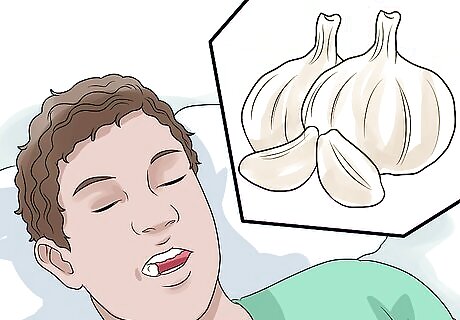
Try fresh salves. There are some fresh ingredients that you use to help with tooth pain. Cut a small piece of garlic, onion, or ginger. Place it in your mouth, directly over your painful tooth. Once it is there, gently bite down on the piece to release the juice. The juice will help numb and calm your gums.

Use essential oils. Essential oils can help with your tooth pain. Use these on your fingers, then massage them into your gums with your fingers. You can also make a mouth rinse with a few drops of essential oils and a few ounces of water. Never swallow essential oils. They can be toxic. Good essential oils for tooth pain include: Tea tree Clove Sage and aloe Cinnamon Goldenseal oil Peppermint You can also use warm olive oil and warm vanilla extract
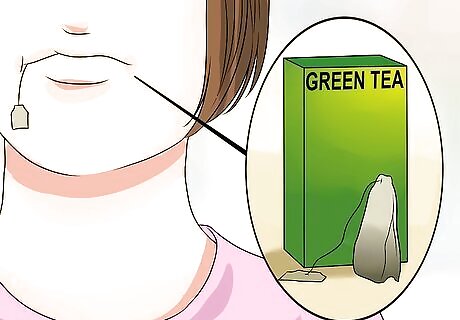
Treat pain with a teabag. Tea has properties that can help with your pain. To make a tea compress, soak an herbal tea bag in warm water. Once the tea is steeped, put the tea bag over the tooth. Keep it in place for five minutes. Repeat this process two to three times a day while you're in pain. Good teas to use are: Echinacea tea Goldenseal tea Black tea Sage tea Green tea Dandelion tea
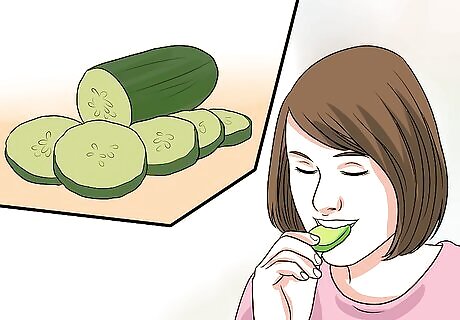
Try chilled food. One way to help with pain is to use chilled pieces of food. You can put chilled pieces of cucumber or raw potato on your tooth. You can also use a frozen piece of fruit, such as banana, apple, guava, pineapple, or mango. This won't work well for you if your tooth is sensitive to cold. Try the chilled cucumber or potatoes first because they will be less cold than the frozen fruit.
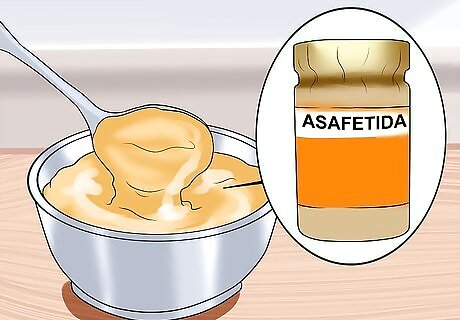
Make an asafetida paste. Asafetida is a plant used in Indian cooking and traditional medicine. Visit an international or Indian grocery store to find this, which typically comes as a powdered or a lump of resin. To make the paste, mix ¼ teaspoon of the powder with enough fresh lemon juice to make a paste. Once it is mixed fully, apply the paste on your wisdom tooth and around the gum. Leave it on your gum for five minutes. Rinse your mouth out with water to remove the paste from your mouth. Repeat the application of the paste two to three times a day. The paste will taste bitter and have an unpleasant odor, but it is gently combated by the lemon juice.
Understanding Wisdom Teeth
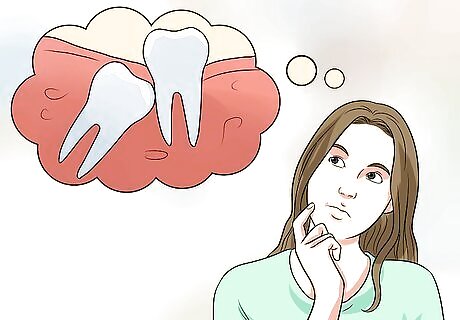
Learn about wisdom teeth. Wisdom teeth are the last permanent teeth to come in, with two on top and two on bottom. They generally show up between the ages of 17 and 25. Not every person get wisdom teeth and not all eruptions of wisdom teeth cause pain.
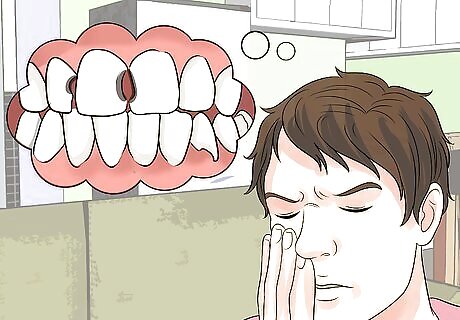
Know the causes of the pain. There are situations that do make wisdom teeth cause pain. This can happen if they grow in at an angle. They can also become impacted in against the neighboring tooth, which happens when there isn’t enough room for the new tooth. Other issues that arise from growing wisdom teeth include: Infection Tumors Cysts Damage to neighboring teeth Tooth decay Constant Pain in your jaw up to your front teeth Inflamed nodes Gum disease

See your dentist. Although wisdom teeth may cause issues, they don’t always need to be extracted. The pain you experience from your wisdom teeth is easily treatable in most cases. If you keep experiencing pain after you try home remedies, visit your dentist. If you have intense pain, develop bad breath, have any swallowing difficulties, have a fever, or experience any gum, mouth, or jaw swelling, see your dentist immediately. There also may be a larger problem or they may need to extract your teeth.




















Comments
0 comment